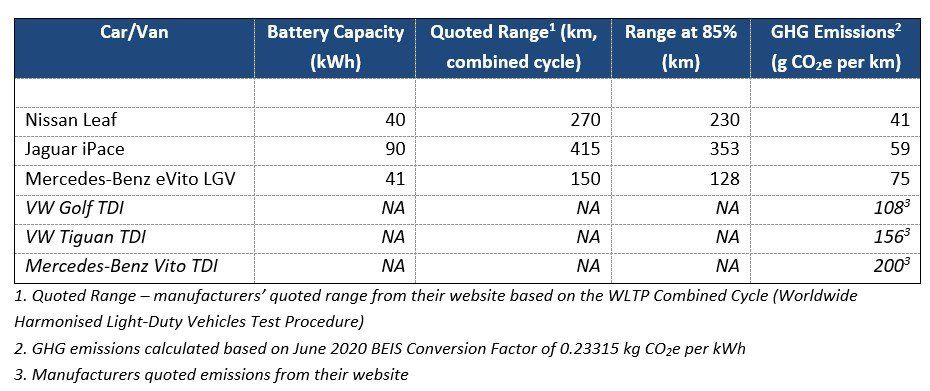
Are Battery-Electric Cars and Vans Environmentally Friendly?
On 16 June 2020, the Department for Transport announced the
introduction of ‘green number plates’
for zero emission battery-electric
cars and light goods vehicles (vans)
[1] . The new style number plates will have a green
flash on the left-hand side (both front and rear) and will be fitted to new
battery-electric vehicles from Autumn 2020, making it easier for such vehicles
to be identified as ‘zero emission’. In
addition to incentivising their use, the presence of a ‘green number plate’
will make it immediately obvious whether that vehicle is eligible for ‘zero
emission’ benefits, such as the use of parking spaces with charging points or
exemptions from clean air zone charges.
While battery-electric cars and vans are ‘zero emission’ at the tail-pipe, the current generation mix in Great Britain means that electricity consumption produces greenhouse gas (GHG) emissions. The Department for Business, Energy and Industrial Strategy (BEIS) estimates this to be 0.23314 kg of CO2e per kilo Watt hour (kWh) of electricity consumed (2020 Conversion Factors). Charging a battery-electric car/van direct from mains electricity therefore generates emissions of greenhouse gases. MDS Transmodal has therefore estimated the likely GHG emissions generated when charging the battery on two popular cars now on sale, plus a van of the size typically used by parcel couriers/e-commerce. This is shown in the table below (grams of CO2e per km); comparable efficient diesel equivalents are also shown. In each case, we have assumed that the expected battery range in normal driving conditions will be 85% of the manufacturers’ claimed distance, which is understood to be the actual range in real life.

The key conclusion to draw from this analysis is that while
battery-electric cars/vans are not a complete ‘free ride’, the GHG emissions
produced are significantly below that of equivalent efficient diesel
vehicles. We should also expect these
outputs to fall over time as more zero-carbon capacity (wind, solar and
nuclear) replaces the use of hydro-carbon based fuels (coal and gas) for
electricity generation. Obviously, other
gaseous emissions (e.g. NOx) are also removed from the ‘tail pipe’
with battery-electric.
It is also important to remember that battery-electric cars and vans will still produce emissions of particulate matter (so called PM2.5) at similar levels to petrol and diesel powered cars, principally from brake disk wear, tyre degradation and damage to the road surface. They will also be involved in accidents with pedestrians, particularly as they are so much quieter than petrol and diesel vehicles. Therefore, while battery-electric cars and vans appear to be a significant step forward when it comes to GHG emissions, walking, cycling and the use of public transport (particularly electric rail/light rail) are likely to remain the most environmentally friendly modes of transport for some time to come.
